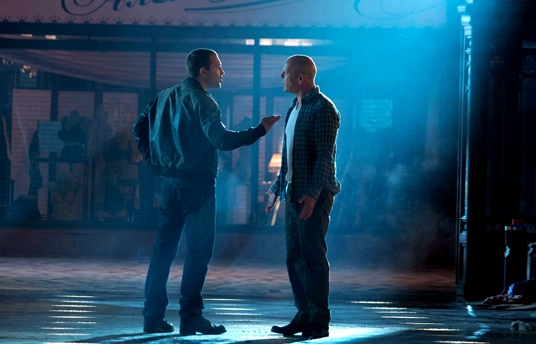Now Playing in Doha! : A Good Day to Die Hard
Feb 14, 2013

By Alexander Wood
A cold and hostile mother Russia plays host to ruthless criminals now turned politicians as a young CIA agent, Jack McClane (Jai Courtney), is imbedded in the underworld of Moscow in order to prevent a nuclear weapons heist. Meanwhile in America, John McClane (Bruce Willis) receives news that Jack is involved in some kind of trouble and boards the first plane to rescue his supposedly delinquent son. Little do the father and son team know, that they will experience some quality bonding amidst hailstorms of gunfire, car chases and radioactive reconnaissance missions at Chernobyl.
The latest addition to the ‘Die Hard’ series is set in a new landscape; one which has less of the societal restrictions, more automatic weapon fire and countless battles with Russian Mi-24 helicopters. Mirroring the change of location is a new filmic style that uses more extreme light conditions and vibrant colors to add a whole new feel to the franchise. The films predating ‘A Good Day to Die Hard’ all use very realistic, real world lighting conditions, thus the newest addition to the series is ascetically unique.
By using this lighting technique, action hungry audiences get to see more visually impressive explosions and gun battles. The advantage for the viewer is that the grey landscape of Moscow is painted in the wake of John McClane’s destruction. Additionally, the use of handheld camera work adds another visual indicator, suggesting that the fifth film is moving away from the style of ‘Live Free or Die Hard’ and creates its own. Towards the end of ‘A Good Day to Die Hard’ there is another example of the new style of camera work, as the camera is placed between the characters and plumes of smoke, partially obscuring the scene creating a great depth of field.
This quest to create a unique visual style has to be respected, even by diehard fans, as the previous film in the series seemed very cartoon like, and for this reviewer, it was less believable than the latest addition. One of the strengths of John Moore’s film was that it didn’t try to be totally realistic, and the extreme lighting helped make audiences aware of this fact. Many of the slow-motion action sequences and crushing vehicle chases carried the torch of the Die Hard series well, however at times there was a need for a little more quality action. Then again, any new film will be compared to the undeniable greatness of the original, which is difficult if not impossible to live up to.
‘Die Hard’ purists who may or may not have wrapped their feet in tea towels as kids, mimicking McClane’s glass pulling heroism, might love, like or loathe the film; but the legacy of the film series is undeniable as it has spanned 25 years. The reach of the film franchise has become a legend for action enthusiasts and the quality of the original film can never be defused. Within ‘A Good Day to Die Hard’ there are some scenes that pay homage to the original. Towards the end of the film John McClane is hanging off a truck, which of course is tethered to a helicopter, and then is thrown through a window. The scene is clearly an allusion to the original film when John McClane is forced to jump through a window barefoot and later removes shards of glass from his feet. Two missing elements in the film were McClane’s colorful vernacular that has become an iconic part of the series, and the fact that audiences don’t get to hear Dean Martin’s ‘Let It Snow’!.
The original ‘Die Hard’ can easily be appointed one of the best action films of all time, making it problematic to assess all the films that come after, as no sequel can ever measure up to the world’s introduction to John McClane’s prowess. However, if there are fans who want a definitive comparison of all of the films’ destruction statistics, these awesome info-graphics of the films should help. In closing, if you don’t have any plans for this evening, then enjoy your valentine’s day by heading to the theatre and yelling ‘Yippee-ki-yay’ during the opening credits.
video#1